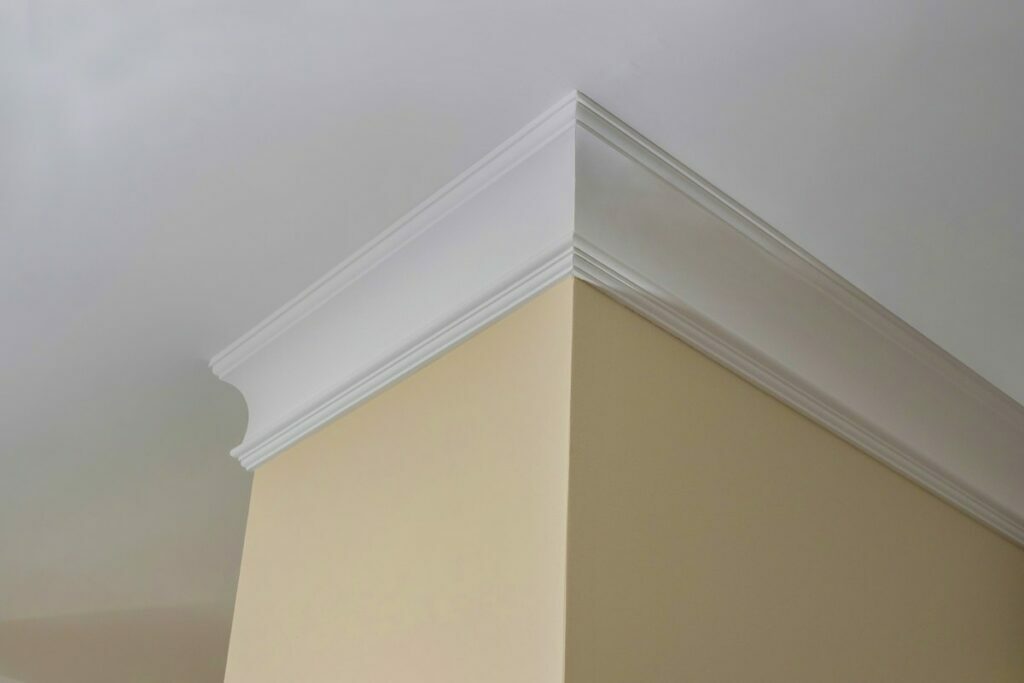Wood Vs. Composite PVC Mouldings
19th Jun 2021
Two of the most common building materials are wood and PVC. While you can find these materials throughout a home, they are especially common choices for mouldings.
Each material offers its own benefits and drawbacks.
Whether you’re renovating a home or lightly remodeling a single room, you might be deciding between wood or composite PVC mouldings for your project. This article will compare both types of materials so you can make the best decision for your home.
Wood Moulding

Wood is one of the most widely used construction materials in buildings and houses. The wood manufacturing process involves cutting and shaping wood, refining it, and properly treating it to improve durability.
Wood cutting begins with a primary saw, which cuts the tree slabs or flat boards. Next, special machinery is used to shape irregular edges and correct defects from unfinished pieces. The result is a perfectly trimmed wood piece.
Benefits of Wood Mouldings
From sustainability to customization, wood has many benefits when used as material for mouldings.
Sustainability
Because wood is sourced from trees, it’s a renewable resource. Trees that have been cut down for use as lumber can be replanted. Many mills work exclusively with sustainable loggers, including Mouldings One.
Environmentally Friendly
Wood is a green building material. Because wood is natural, it’s biodegradable and has minimal impact on the environment. However, certain treatments, including stains, varnishes, and paints, can increase wood’s environmental impact. So, additional environmental best practices should be observed to minimize this impact.
Can Be Re-cut & Re-use
Because wood is pliable, it can be carefully removed from walls or other locations and then re-used. It can also be re-cut if it needs to fit a different space, or if it was cut incorrectly from the start.
Easy Customization
Unlike PVC, wood can be easily customized. Caulk, paints, and stains all easily adhere to wood. This gives homeowners and contractors a range of options for the look and feel of wood moulding.
Natural Colors & Warmth
Wood has long been treasured for its natural hues and warmth. With a large variety of wood species, and the natural, organic colorations of each one, wood mouldings offer a range of looks that require little to no additional customization.
Need custom wood moulding for your project?
View Our Wood Moulding Options
Drawbacks of Wood
Despite its many benefits, wood moulding does have a few drawbacks.
Wood Is Porous
Unlike plastics and PVC, wood is porous. This means, without proper treatment, it will absorb moisture. Untreated wood will suffer irreversible damage and discoloration if exposed to water for prolonged periods. Even treated wood can be damaged by significant exposure to water and high temperatures.
Wood Is Expensive
Price is often one of the most significant drawbacks for wood mouldings. Compared to other materials, wood is generally the highest priced option.
Composite PVC Moulding

PVC is an abbreviation for polyvinyl chloride. PVC is made by injecting shapeable liquid into a mould or matrix. These products are durable and easy to install. It is easier to fit PVC components anywhere.
These mouldings are very cost-effective, and they are mostly used for manufacturing tables, boards, kickboards, and other things in construction.
Benefits of PVC Moulding
PVC mouldings offer their share of benefits for homeowners and contractors. They are valued for being durable, resistant, and inexpensive. We’ll explain each of these benefits in more detail below.
Price
PVC is less expensive than other materials, including wood. This makes it an attractive option for those with a specific budget.
Durability And Resistance
Organic materials, like wood, are susceptible to water damage and natural degradation over time. By comparison, PVC is water resistant and won’t degrade. This makes it an affordable option when conditions aren’t ideal for other materials, like in bathrooms or exposed areas of a home or building. PVC is also resistant to insects and other pests.
Simple Options
PVC moulding doesn’t need to be treated or painted. Usually, PVC moulding is white, which works well for many homes. This makes it easy to install as-is.
Drawbacks of PVC Moulding
Despite these benefits, there are also some significant drawbacks to PVC mouldings, including installation, environmental impact, and lack of customization.
Limited Customization
PVC mouldings cannot easily be painted nor can they be stained. This means PVC offers limited options for customization. If all you want is a simple white moulding, this won’t be an issue. But if you want to add color to a room or to create an accent, PVC moulding will fall short.
Difficult Installation
Because it’s a brittle material, nail holes must be pre-drilled into PVC mouldings. If you attempt to pound a nail directly into the moulding, it can crack and even shatter the piece. In some cases, this can make an entire length of PVC moulding useless. Additionally, a simple hand or power saw can easily cause damage if used to cut PVC moulding.
Poor Reuse Options
PVC mouldings cannot be easily reused. Removing PVC from a wall commonly results in damage that makes the entire moulding unusable.
Non-biodegradable
For builders and homeowners who wish to be environmentally conscious, PVC moulding is a poor choice. It’s non-biodegradable, is not manufactured from sustainable resources, and its initial production results in greenhouse gases and chemical byproducts.
Finding The Right Moulding Option
Wood and PVC mouldings share their own pros and cons. It’s important to weigh both the benefits and drawbacks of each to decide which is the better option for your project.
If wood mouldings are the right choice for you, be sure to work with a mill that produces quality woodwork. At Mouldings One we offer custom designed mouldings made of sustainable, locally sourced wood. View our moulding options to find the perfect profile for your project, or contact us for more information about custom millwork.
Filed Under: News
